Motion UI Design Masterclass For UX UI Designers – Gold Package By Alexunder Hess – Instant Download!
Explore the Learning Experience
The Motion UI Design Masterclass (Gold Package) by Alexunder Hess is a complete, practice-driven pathway for designers who want to add animation, micro-interactions, and polished prototypes to their toolkit. Delivered as a 2.90 GB self-paced program priced at $123.9, it shows you how to bring interfaces to life, pitch with confidence, and hand off animations developers can implement accurately. Think of this as the missing link between static UI and wow-effect user experiences. If you’re looking for an elegant, editorial motion style that strengthens your portfolio and persuades clients, this masterclass is built for you.
Free Download the Motion UI Design Masterclass For UX UI Designers – Includes Verified Content:
Motion UI Design Masterclass For UX UI Designers – Free Download Video Sample:
Motion UI Design Masterclass For UX UI Designers – Watch Content Proof here:
Your Journey Begins Here
Most portfolios are a carousel of static screens. Great portfolios move. In the Motion UI Design Masterclass, you’ll learn the principles that make motion feel effortless: timing, easing, continuity, and narrative intent. You’ll also learn the limits of the tools you already use and how to work with them (not against them) to craft micro-interactions, page transitions, and prototype flows that feel production-ready. With a mix of Figma, Adobe XD, and Principle, you’ll build a motion vocabulary you can reuse across websites, mobile apps, branding presentations, and logo reveals—all while keeping skin tones, typography, and brand colors faithful to the original UI.
Why This Masterclass Works
Plenty of courses teach After Effects wizardry. This one teaches Motion UI—motion for products. You’ll understand the difference between motion graphics and Motion UI, when to animate (and when not to), how to define the purpose of every movement (feedback, focus, continuity, or delight), and how to explain that purpose to stakeholders. You’ll practice with triggers, learn to analyze other designers’ work, and discover how Apple- and Google-style landing pages create depth, flow, and emotional momentum with masks, parallax, and staged reveals. The outcome is a repeatable process you can apply to any component, any screen size, any platform.
Inside the Course
Fundamentals (Module 1) – Foundations That Scale
-
What Motion UI design is (and isn’t) and why every UX/UI designer needs it.
-
Core triggers and transition types, with guidance on which to choose and why.
-
Tooling overview (Figma, XD, Principle) and how to pick the right one for each job.
-
The first and second fundamental principles—timing/easing and staged choreography—so your animations feel intentional, not gimmicky.
-
A teardown of top brand landing pages to decode how content, scroll, and depth work together.
Result: You can analyze any animated interface and outline a clear motion plan before you animate a single frame.
Practice (Module 2) – Attributes, Masks, and Scroll Magic
-
The most-used attribute in motion (you’ll use it constantly), plus the least used and when it shines.
-
Working with scroll to create sticky narratives and progressive reveals.
-
Masks for elegant peeks, slides, and layered movement that feels premium.
-
Size vs. scale (and when each breaks visual rhythm).
-
Border-radius animations, effect reveals, and isometric elements that pop without overwhelming the UI.
Result: You can build production-ready micro-interactions and section-level choreography that guide attention and reduce cognitive load.
Motion UI with Principle (Module 3, Gold) – Power Prototyping
-
Importing from Figma/XD, structuring scenes, and working with Principle’s five core panels.
-
Building an Apple-style landing page with depth cues, parallax, and stateful sections (start to export).
-
Creating a complete mobile app prototype with context-driven transitions, gesture feedback, and onboarding animations.
-
Exporting animations for Dribbble, Behance, and stakeholder reviews.
Result: High-fidelity prototypes that communicate intent, timing, and feel—so decisions happen faster.
Export & Developer Handoff (Module 4) – From Demo to Delivery
-
Export settings, embed options, and link sharing for portfolio and client decks.
-
“Specs for motion”: documenting durations, delays, easings, and triggers in a developer-friendly way.
Result: Smooth collaboration—developers know exactly how to replicate your motion in code.
What You’ll Master (and Why It Matters)
-
A product-ready motion mindset. You’ll treat motion as a usability tool—clarifying state changes, increasing perceived performance, and creating continuity between screens.
-
Micro-interactions that feel invisible. Tap, hover, drag, and scroll behaviors that inform without distracting.
-
Transitions with purpose. Page and modal transitions that strengthen information architecture and reduce context loss.
-
Masks and reveals. Sophisticated, resource-light techniques for motion UI that reads as premium.
-
Logo, poster, and banner animation. Simple, brand-consistent moves that elevate graphic design work.
-
Portfolio-level prototypes. Live flows that wow clients and recruiters—no After Effects required.
-
Developer-savvy communication. Clear motion specs that shorten build cycles and reduce iteration churn.
Key Benefits / What You’ll Gain
-
A repeatable motion system you can apply to apps, sites, and branding.
-
A stronger portfolio with animated case studies that stand out in minutes.
-
Confidence to present and sell your motion work—because you can explain the “why.”
-
Faster approvals: stakeholders feel the product, not just imagine it.
-
A common language with engineering, including cubic-bezier curves, durations, and state diagrams.
-
A market edge: most designers never add Motion UI to their skill stack—this is your advantage.
Who This Course Is For
-
UX/UI Designers (Mid–Senior): Add micro-interactions, transitions, and prototypes that unlock higher-value roles.
-
Graphic Designers (Mid–Senior): Animate logos, posters, banners, and typography to level up your portfolio.
-
Motion/Interaction Beginners: Learn foundations without AE or code; build real product motion fast.
-
Curious Non-Designers: Product managers, founders, and no-code builders who need to brief and evaluate motion confidently.
About the Instructor / Behind the Course
Alexunder Hess distills Motion UI into principles you can apply immediately: what to animate, when to animate, and what to leave still. His approach is tool-agnostic—if you know Figma, XD, Sketch, InVision Studio, or even Keynote, you can follow along. The emphasis is clarity over complexity, value over vanity, and outcomes over effects. You’ll leave with portfolio-ready demos and a method for analyzing any new component or page.
What’s Inside at a Glance
-
Module 1 (Fundamentals): Triggers, purposes, transition selection, tooling, and brand page analysis.
-
Module 2 (Practice): Attribute hierarchy, scroll choreography, masks, effects, isometrics, size vs. scale, border-radius moves.
-
Module 3 (Principle – Gold): Importing, scene structure, Apple-style page, full mobile prototype, exporting for web and showreels.
-
Module 4 (Export & Devs): Sharing, embedding, and motion specification for handoff.
-
Resources: Sites and libraries for inspiration, best practices, and common pitfalls to avoid.
Final Thoughts / Ready to Start?
For $123.9, you get lifetime access to 2.90 GB of step-by-step instruction, templates, and workflows that turn static screens into living interfaces. The Motion UI Design Masterclass (Gold) doesn’t just teach techniques—it builds judgment, so your motion supports usability, communicates state, and creates delight without excess. Add this skill once, and it compounds across every project you touch.
Start mastering motion today on Glocara—and give your portfolio the premium edge clients and hiring managers can feel at a glance.

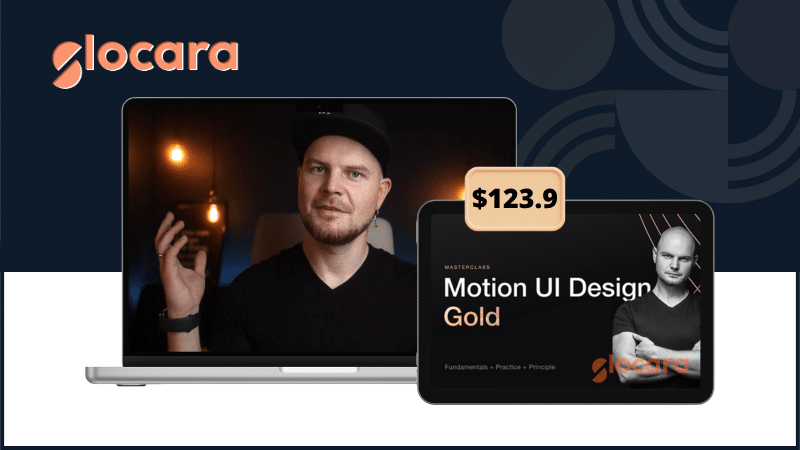
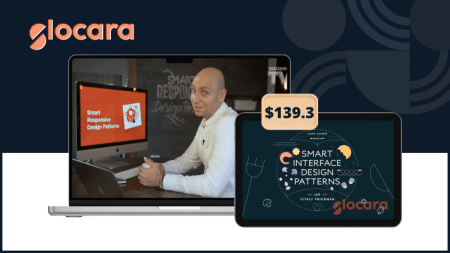


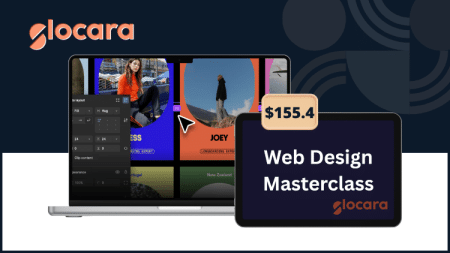
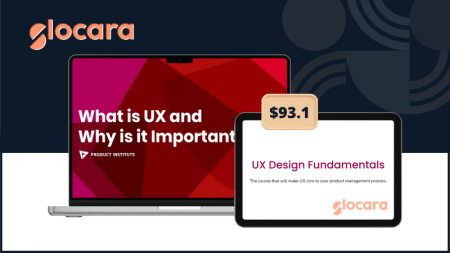
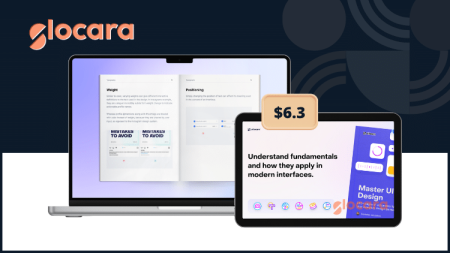
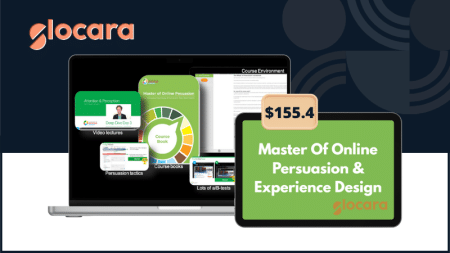
Reviews
There are no reviews yet.